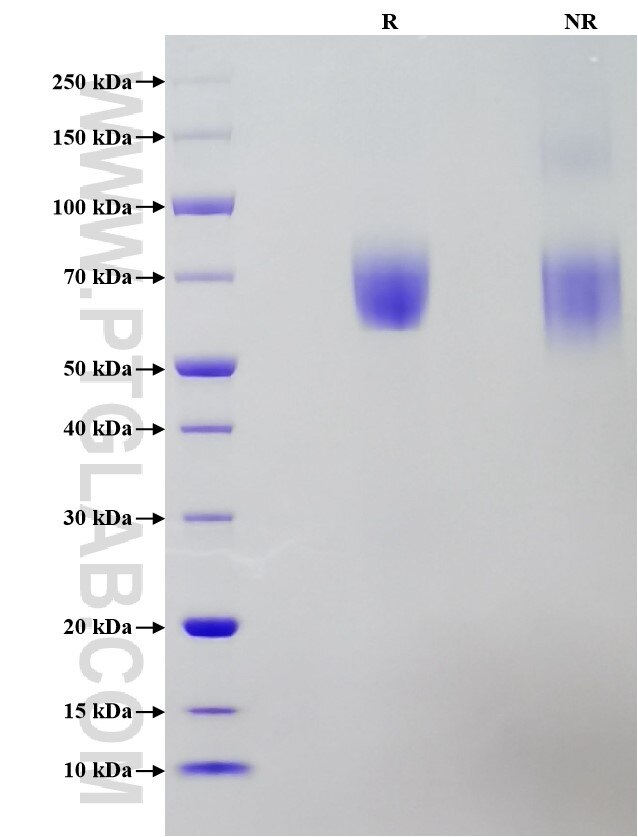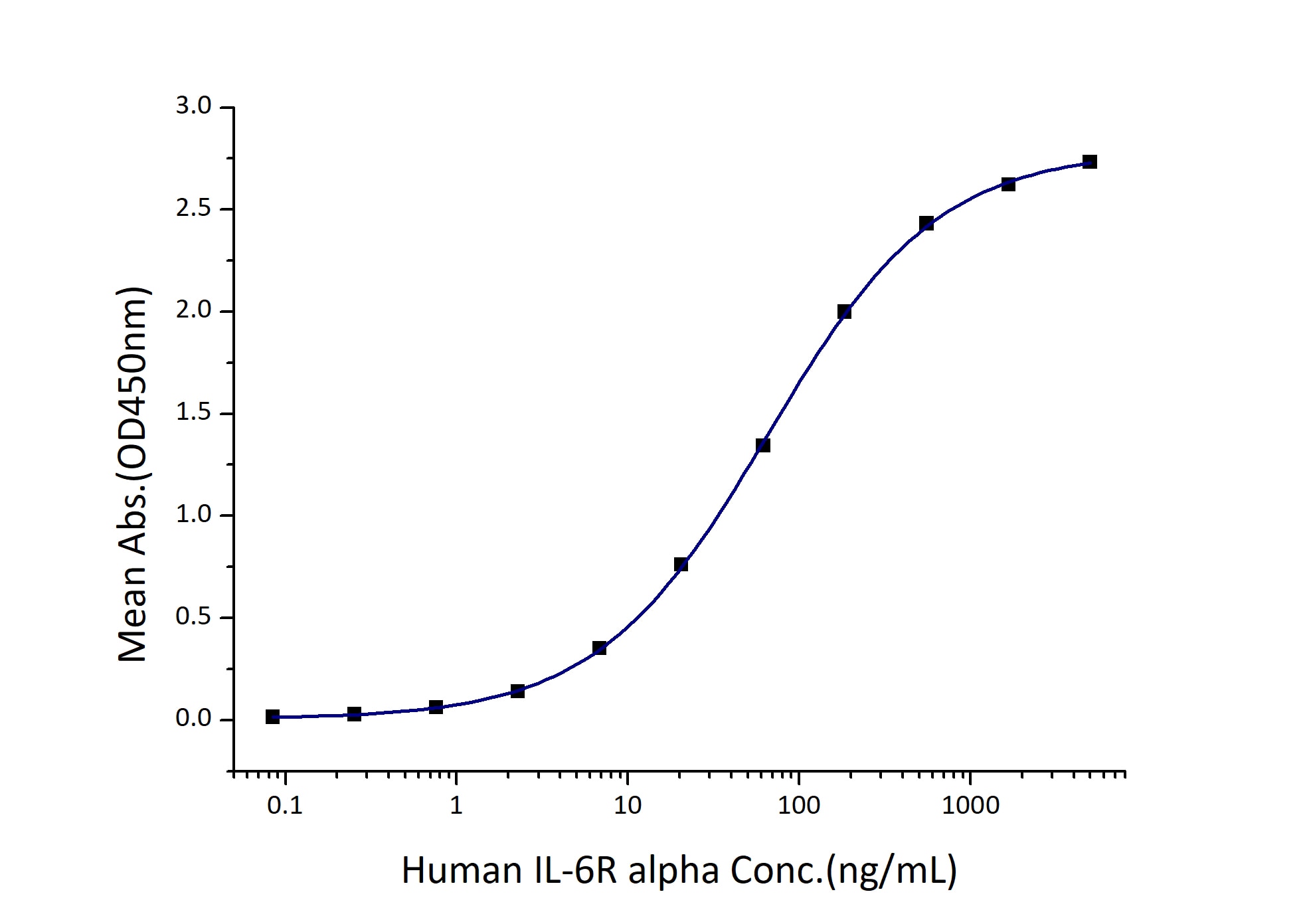Recombinant Human IL-6R alpha protein (Myc Tag, His Tag)
Species
Human
Purity
>95 %, SDS-PAGE
Tag
Myc Tag, His Tag
Activity
EC50: 32-130 ng/mL
Cat no : Eg0180
Validation Data Gallery
Product Information
| Purity | >95 %, SDS-PAGE |
| Endotoxin | <0.1 EU/μg protein, LAL method |
| Activity |
Immobilized Human IL-6 (Myc tag, His tag) at 1 μg/mL (100 μL/well) can bind Human IL-6R alpha (Myc tag, His tag) with a linear range of 32-130 ng/mL. |
| Expression | HEK293-derived Human IL-6R alpha protein Leu20-Pro365 (Accession# P08887) with a Myc tag and a His tag at the C-terminus. |
| GeneID | 3570 |
| Accession | P08887 |
| PredictedSize | 41 kDa |
| SDS-PAGE | 60-75 kDa, reducing (R) conditions |
| Formulation | Lyophilized from 0.22 μm filtered solution in PBS, pH 7.4. Normally 5% trehalose and 5% mannitol are added as protectants before lyophilization. |
| Reconstitution | Briefly centrifuge the tube before opening. Reconstitute at 0.1-0.5 mg/mL in sterile water. |
| Storage Conditions |
It is recommended that the protein be aliquoted for optimal storage. Avoid repeated freeze-thaw cycles.
|
| Shipping | The product is shipped at ambient temperature. Upon receipt, store it immediately at the recommended temperature. |
Background
Interleukin-6 (IL-6) is a pleiotropic cytokine produced by a variety of cells during infection, trauma, and immunological challenge. IL-6 acts via a receptor complex consisting of two distinct membrane-bound glycoproteins, an 80-kDa IL-6-binding subunit (IL-6R alpha, CD126, gp80) and a 130-kDa signal-transducing element (gp130, CD130). After binding of IL-6 to membrane-bound IL-6R alpha, the complex of IL-6 and IL-6R alpha associates with gp130, thus activating the receptor. Expression of gp130 is found in almost all organs while expression of IL-6R alpha is predominantly confined to hepatocytes and leukocyte subpopulations (monocytes, neutrophils, T cells, and B cells). Soluble form of IL-6R alpha has been found in human serum and urine.
References:
1. Tilg, H et al. Blood vol. 83,1 (1994): 113-8. 2. Heinrich, P C et al. The Biochemical journal vol. 334 ( Pt 2),Pt 2 (1998): 297-314. 3. Jones, S A et al. FASEB journal : official publication of the Federation of 4. American Societies for Experimental Biology vol. 15,1 (2001): 43-58. 5. Novick, D et al. The Journal of experimental medicine vol. 170,4 (1989): 1409-14. 6. Honda, M et al. Journal of immunology (Baltimore, Md. : 1950) vol. 148,7 (1992): 2175-80.


